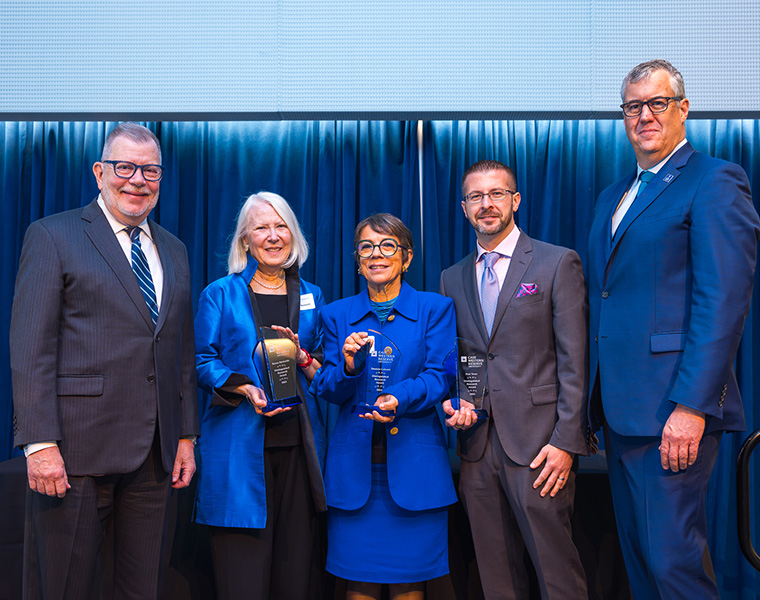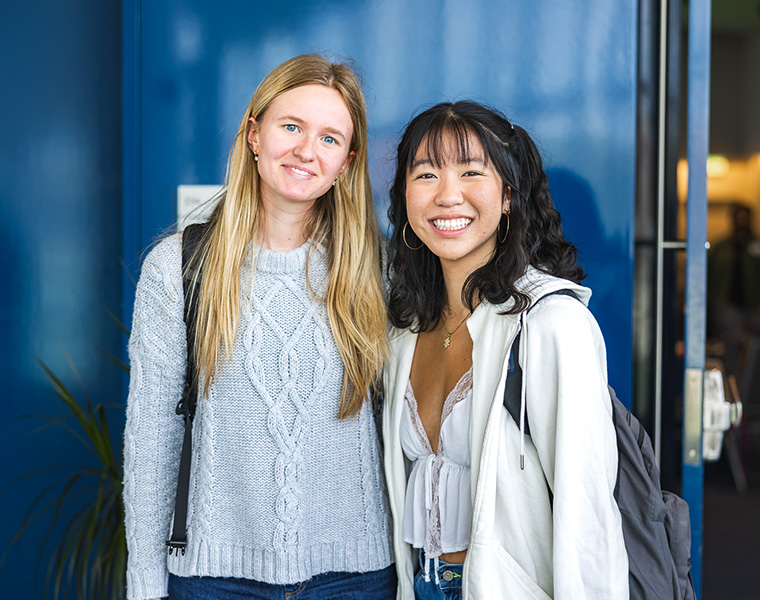As the university’s third annual Innovation Week arrived on campus, hundreds gathered at Case Western Reserve to celebrate and advance the university’s culture of innovation, learn from experts and share ideas and experiences. The week involved 45 events, each focused on the theme of how persistence through failure can lead to innovation.
Attendees at various events celebrated the winners of the Faculty Distinguished Research Awards, Innovator of the Year Awards, and Milestone Awards—all designed to celebrate the determination research requires.
“When we achieve success, we more often than not do it because we learn from our failures,” said CWRU President Eric W. Kaler. “Indeed, it’s the heart of scientific discovery and scholarship. And here at Case Western Reserve University, we have a terrific and quite famous example of failure and persistence in innovation.”
The famous example in question is the 1887 Michelson-Morley Experiment, an effort by Professors Albert A. Michelson and Edward W. Morley to detect the motion of the earth through the theoretical substance “luminiferous aether,” which 19th century physicists believed was essential to the transmission of light. Though the experiment ultimately failed to detect any motion of the expected magnitude, it ultimately provided experimental confirmation in Albert Einstein’s 1905 theory of relativity.
“Since that famous experiment, Case Western Reserve has been home to extraordinary scientific discovery and innovation,” said President Kaler. “And today, our staff, faculty and students, are doing highly innovative and impactful research across an incredible range of topics.”
Also during Innovation Week, faculty researchers competed for the “Serendipitous Epiphany through Efforts to gain Knowledge” (SEEK) award, inspired by the history of the Michelson-Morley experiment. The honor was to be awarded to the researcher whose persistence through research setbacks led to the best unintended and unexpected results.
By a live audience vote, Christian Zorman, senior associate dean at Case School of Engineering, won the top prize and $1,000. Other participants will receive $500:
- Elyssa Barrick & Sarah Hope Lincoln: Inclusion Makes the Difference
- Parameswaran Ramakrishnan: Are control proteins mere controls or do they have a role in life?
- James Seckler: The fortuitous mistake that will enable imaging of peripheral nerves axons for the $17M REV
- Christian Zorman: Particle-Free, Surfactant Free Inks Based on Metal Salt Precursors for Inkjet Printing of Flexible Electronics and Sensors on Temperature-Sensitive Substrates
Postdocs and student researchers also took part in the action, participating in a Poster Pitch Contest designed to challenge them to engage a broad audience on research themes via succinct presentations. The contest had 71 competitors and yielded 10 winners:
- Lyra Bhatnagar: Biomedical Engineering
- Fiona Brooks: Biology
- Daniel Feinberg: Pathology
- Amin Jamei Oskouei: Macromolecular Science & Engineering
- Zul Kazeem: Civil & Environmental Engineering
- Lexi Knight: Chemistry
- Gabrielle Labrozzi: Biomedical Engineering
- Jamiu Lateef: Civil & Environmental Engineering
- Suzhou Li: Biomedical Engineering
- Julianne Origlio: Psychological Sciences











